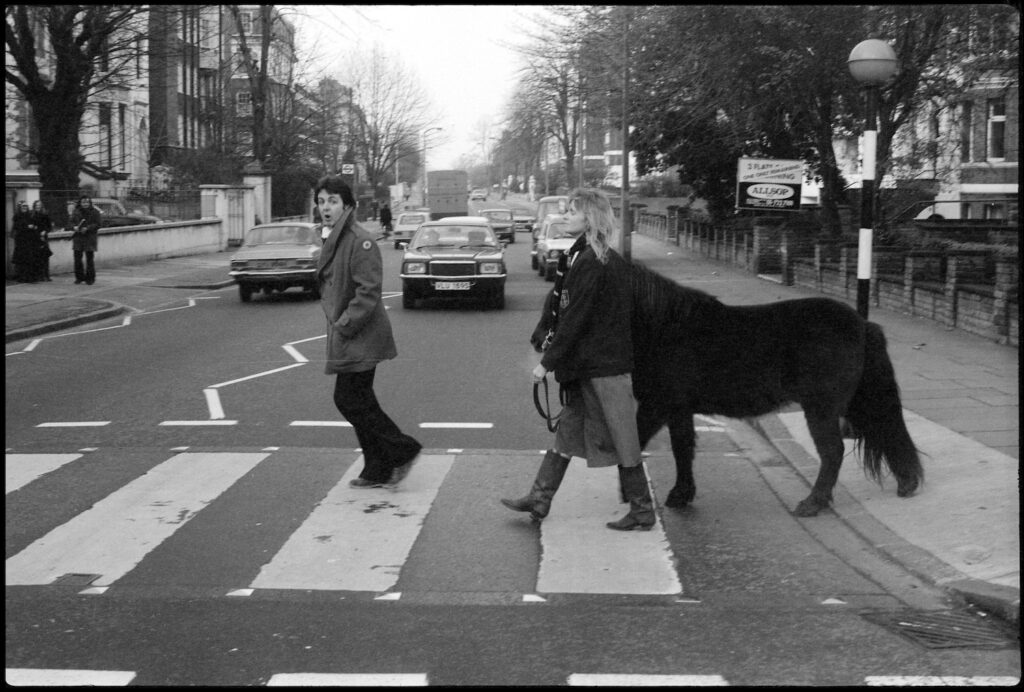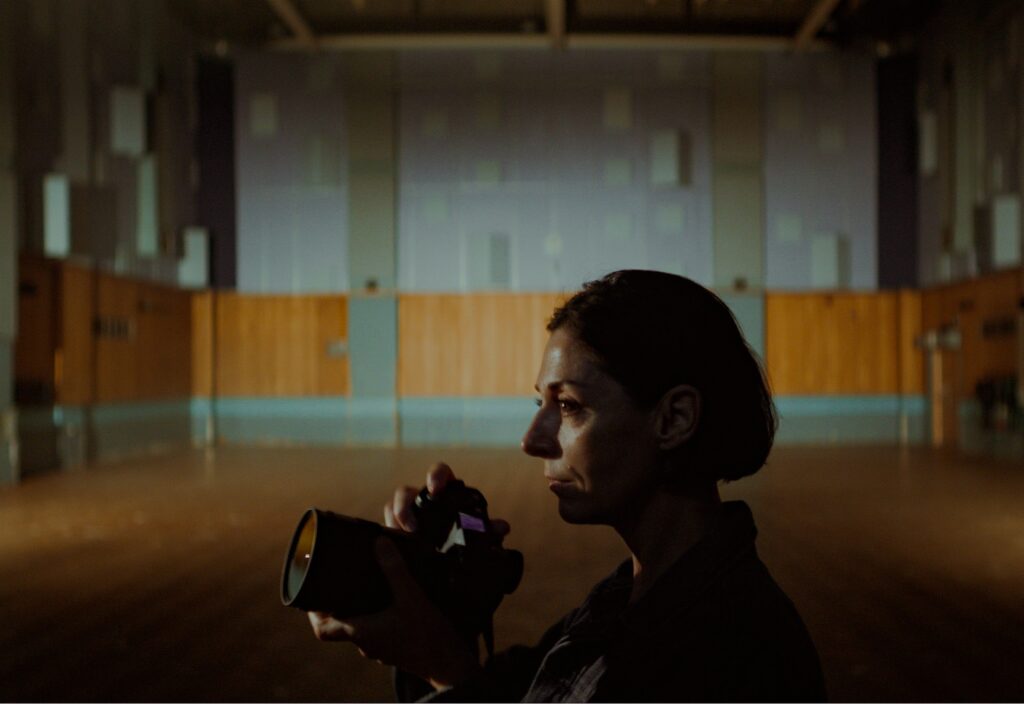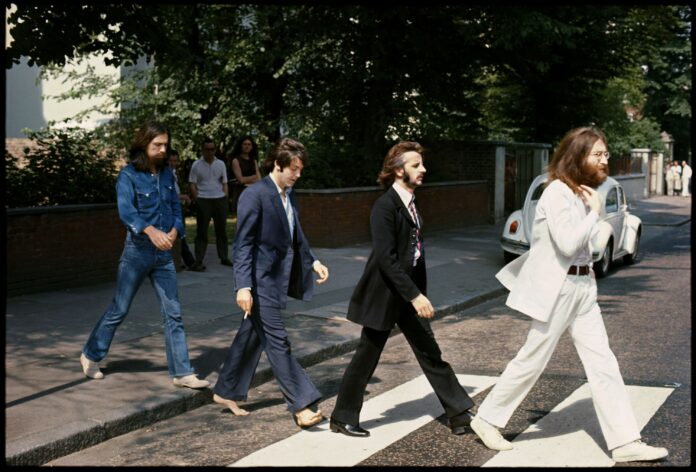If These Walls Could Sing (playing Tue/14 at Vogue Theatre as part of the Mostly British Film Fest) is Mary McCartney’s loving tribute to London’s Abbey Road Studios, where some of the most influential albums of all time were recorded.
For the feature-length documentary, the first-time director capitalized on her background as a portrait photographer, creating beautiful shots of the recording studios and inviting settings for her esteemed subjects, Abbey Road alums like Paul McCartney, Ringo Starr, Elton John, Nile Rodgers, Roger Waters, Liam Gallagher, and John Williams, to open up.
It was discovering a 1977 photo that the London-based lenswoman didn’t take that prodded her to make the film in the first place, even before being approached by producer John Battsek.

Inspired by the 1969 Abbey Road album cover image, the classic shot captures her parents, Paul and Linda McCartney, leading the family’s pony, Jet, across the studios’ iconic zebra crossing.
Including archival stills such as these as well as never-before-seen film footage, session tapes, and A-list interviews, If These Walls Could Sing offers the most intimate portrait yet of Abbey Road’s most revered recordings and the artists behind them.
I spoke to Mary McCartney about the making of the film, which premiered as the centerpiece of the studios’ recent 90th-anniversary celebrations, the professional advice her father gave her, and why her appreciation of Abbey Road has only amplified.
48 HILLS The documentary was inspired by seeing a photo of your horse outside the studios?
MARY MCCARTNEY I grew up going to Abbey Road, watching my parents recording. We lived around the corner. But it’s always been a really special place to me. Even when I left home and was working in London, I would still pop by to see the people there. It’s got this real family feeling and a lot of people stay there for a long time and mentor each other.
One day I was there and was looking through an Abbey Road book and saw this picture I’d never seen before of my mother leading a pony across the zebra crossing with my dad. And it just really summed up my mom, how innocent and lovely she was, how much she loved animals, and her thinking that there are no rules.
Then, I was approached to direct by John Battsek, a great documentary producer. I instantly thought of that picture of my mum leading the pony. As a photographer, I’ve started moving into directing, but this was my first feature documentary. So I was like, “Well, if nothing else, I have to do this documentary so I can just get that photograph in there.”
48 HILLS What are your earliest memories of Abbey Road?
MARY MCCARTNEY I remember, at five or six, walking in the reception area and seeing all these photographs from floor to ceiling of different artists that had been recorded there. Wings were up there, so I was always like, “Wow, Mum and Dad are up on the wall.”
But then, somebody like Kate Bush is just very striking visually. I remember being quite small, looking up at this wall and being mesmerized by the musicians and how they were dressed. It was probably a very ‘70s vibe as well. So it was just really interesting.
And wandering along the corridor and seeing they have different tape machines and all these different instruments that are lying around. It was a bit of a treasure trove.

48 HILLS Did your father offer any advice that served you when making the film?
MARY MCCARTNEY He told me about the process of recording. He mentioned [chairman of EMI Records which signed the Beatles] Sir Joseph Lockwood. It’s interesting… I watched a documentary about Abbey Road, and he didn’t come up in it. Then, in a lot of the research, Joseph Lockwood wasn’t coming up. But I kept saying to my team, “Hang on, there’s this Sir Joseph Lockwood. My dad mentioned him a couple of times. I feel like we should research him.” So he gave me that, which was great because it weirdly wasn’t coming up in the research. He was giving me little nuggets of information.
48 HILLS You’ve said you wanted to showcase moments where artists felt comfortable pushing themselves and creating something new. Talk to me about that mission statement.
MARY MCCARTNEY It goes back to my career as a portrait photographer. Yes, it’s interesting. It’s 90 years and there are lots of interesting stories. But what interests me personally and what the audience is going to be interested in are personal stories and relaxed, open interviews.
So I incorporated my experience as a portrait photographer into the interviews that I did, in that I wanted them to be personal and conversational. For the viewer, it feels like you’re sitting in the room with the person telling you their anecdotes. They’re bringing you into the studio.
48 HILLS You interviewed your father once before for the 2001 Wingspan documentary. How was it different this time around?
MARY MCCARTNEY I’ve also photographed him, too. What was different about this interview was there was so much riding on it in that the interviews are key to my being able to make the documentary, because the etiquette of a recording studio is that you don’t have cameras and pictures and film a lot. After all, that is a space where you go and close the door and create music and you don’t have any distractions and you don’t have to think, “How do I look for a camera or a picture?” You can just concentrate on making music and creating.
So coming into the interview with Dad, I was like, it relies a lot on what mood that person is in on the day. Going back to my portrait photography, I like to set it up to make my subject comfortable, so I light it gently and have a nice setting. I put some props around the studio that were already there, making it feel inspiring to be talking in that space.
Then, I had a great research team, and we went from there. But I am very pleased with the interviews as a whole. But Dad, I can tell he’s more relaxed than I’ve seen him in a lot of interviews. He’s very giving, and you can tell he wants to talk about Abbey Road because it is somewhere very close to his heart. I think that comes across.

48 HILLS David Gilmore said in the film that when you record an album, it’s only when you’re done that you see the big picture of how the individual parts come together. Did that feel the same way for you when you saw how all the photographs, footage, and session tapes came together for your film?
MARY MCCARTNEY I hadn’t thought of it that way. That’s so interesting. Now, having that bigger picture, I feel even more love for the space. It’s weird because it’s been a whole journey. It’s like, why do a documentary about a building? Because it’s had so much magic created there and so many people have congregated there and so many people have become inspired together there—and I now understand why.
48 HILLS If These Walls Could Sing was the centerpiece of Abbey Road’s recent 90th-anniversary celebrations. What was it like screening the film there?
MARY MCCARTNEY They converted Studio One, the big orchestral studio where they do the film scores now, into the screening room for the premiere. They put a large screen and an amazing sound system in and they put out all the seats. That’s where we all sat and watched it.
It was a real goosebump premiere because you’re watching scenes and then archive footage, and it’s in the room that you’re sitting in as they’re talking about these epic things that happened there. So it was pretty incredible. I want to do it again. I have to say, it shouldn’t be a one-off. I think we should do it more often.
MOSTLY BRITISH FILM FESTIVAL runs through February 16. For tickets and more info go here.





